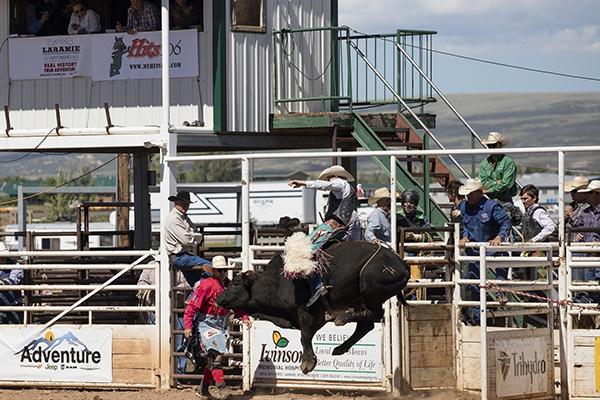Traditions - Rodeos

Rodeo is a traditional activity that is mostly practiced in the United States and Mexico. Its origin dates back to when, in the 18th century, cattle were herded, tied up and branded on American ranches. Over time, cowboys found a new source of income by turning this activity into a spectacle. Today there are championships and different competitions sponsored by big companies like Coca-Cola, and rodeo is the official sport in three states in the USA.
There are several varieties of rodeos: the show can consist of tying up steers, oxen or wild horses, jumping on them, trying to stay on top of them or knocking them down. In these type of events, animals can suffer serious injuries: fractures of their backs, necks, legs, columns, tails, tracheas and horns, internal bleeding, perforations of the lungs, friction wounds and torn tendons are, among others, the most frequent injuries. Almost all animals used in rodeos are sent directly to the slaughterhouse.
Even the most docile horse or bull will kick if a girth is tied tightly to its abdomen or if its genitals are punctured. Often, electric batons, caustic ointments and whips are used to irritate and enrage them before the show. The rules of the Professional Rodeo Cowboy Association (PRCA) allow animals to be kept up to 24 hours in overcrowded trailers without proper feeding and hydration before the show begins.
Some of the exercises that must be performed to obtain a score in the competitions include: riding a horse or bull for 8 seconds in a row with no more grip than the animal's own rope, knocking down a steer, lassoing the horns and then the hind legs of a steer, catching him with a bow, throwing him to the ground and tying three legs with a rope.
These animals, peaceful herbivores by nature, show behaviors such as panic, anxiety and fear when performing these activities. Especially in the case of events involving three and four-month old steers that are violently chased and laid down, many vocalize and defecate on themselves due to stress.
In Chile the rodeo is also practiced, with a history of 400 years in which the riders or "huasos" have to tackle the steer. In the past, machetes were used and blows were given to any part of the animal. Nowadays, these brutal techniques are supposedly regulated.
In any case, this activity continues to cause unnecessary harassment and suffering to both bulls and horses, which are demanded too much and end up receiving the defensive blows of the steer.
More information can be found on the websites of Rodeo Facts and Shark Online.
